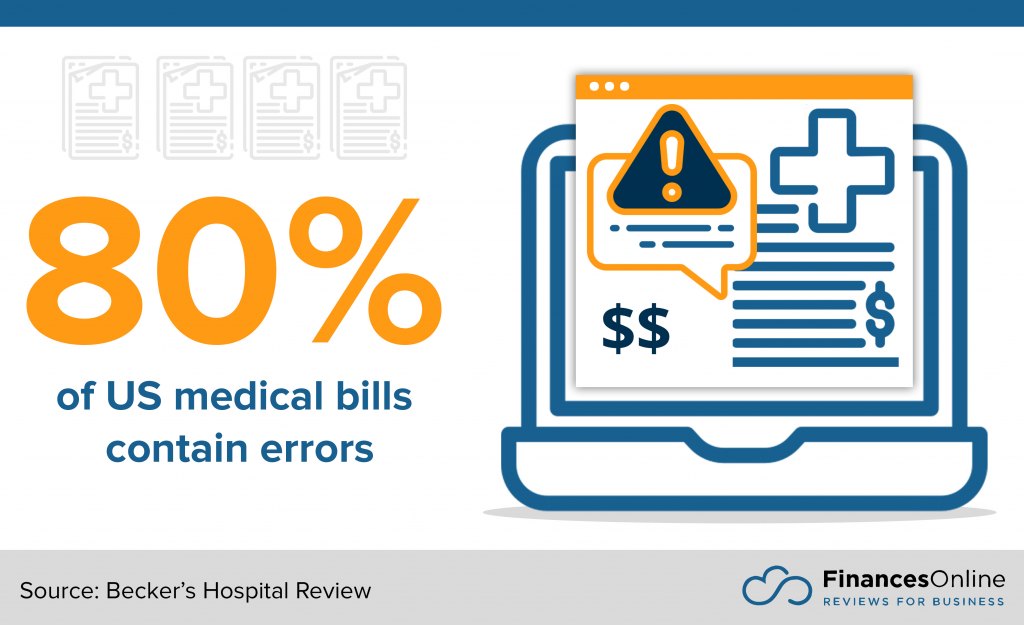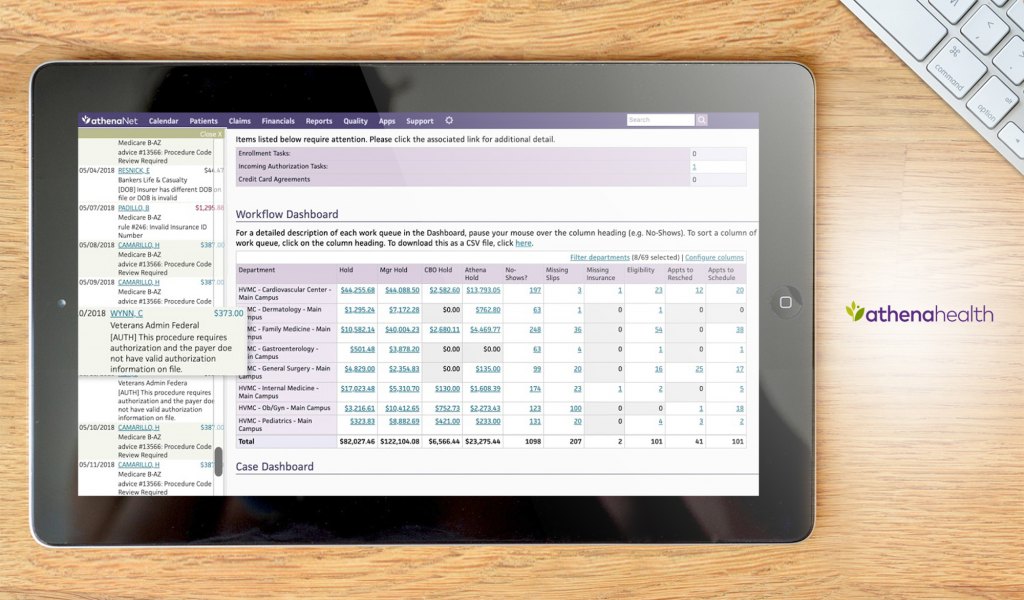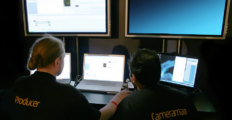Medical practice is a critical area that virtually requires no room for error—and this applies to all areas of the industry. Whether you’re on the operating room floor, in the outpatient department, or managing patient information, everything is part of a system that ultimately saves lives. This makes a medical practice management system ideal for hospitals and clinics.
Entrusting specific processes to medical practice management software, for one, allows healthcare professionals to free up their time. In this way, they can focus on more pressing challenges requiring their specialization.
In this article, we look at the various medical practice management software features, types, and benefits that you stand to gain from deploying this platform in your organization. You can take note of key points and decide which one makes the investment cut for your needs.

Medical Practice Management Software Features, Types, and Benefits
- What is medical practice management software?
- Types of Medical Practice Management Software
- Key Medical Practice Management Software Features
- Examples of Medical Practice Management Software
- Benefits of Medical Practice Management Software
- Medical Practice Management Software Buying Factors
- Potential Issues With Medical Practice Management Software
In the Information Age, medical technology steers the growth of healthcare CRM and other healthcare software. The rapidly growing medical practice management system industry could reach $13.85 billion by 2029. More professionals feel the need for better healthcare facilities, more accurate invoicing procedures, and automation of day-to-day tasks.

Perhaps the most important trend in healthcare technology is people’s use of smartphones for a variety of reasons. More than two-thirds of the world’s population now have cell phones, with 5.31 billion unique users at the start of 2022. The number of mobile users around the world has grown by 95 million in a year. And medical platforms are leveraging this to accelerate the provision of healthcare. From SMS text alerts to dedicated telemedicine and e-prescription apps, patients and providers can access the necessary services anytime, anywhere.
Healthcare, like any other industry, is looking to fully shift into an automatic environment. Apart from the administrative aspect, the internet of medical things (IoMT) will speed up data transfer and collaboration by empowering medical equipment to immediately transfer information where it is needed—a rapidly expanding global market valued at $41.17 billion in 2020.
Literacy is an important factor that helps boost a patient’s recovery chances. Modern management software allows a healthcare provider to monitor patient checkups, procedures, and even medicine purchases. It allows healthcare professionals to connect with their patients and engage with them more effectively. With that, here’s what you need to know about medical practice management software features, types, and benefits.
Medical Practice Management Software Features, Types, and Benefits
What is medical practice management software?
Medical practice management software refers to a specialized type of healthcare software that caters to the administrative aspects of running clinics, hospitals, and other related healthcare organizations. Medical practice software features usually cover both sides of the operation—front end and back end.
Front-End Operations
This refers to the parts of healthcare operations that directly interface with the customer. Usually, front-end work includes
- Scheduling
- Patient registration
- Eligibility checking
- Upfront collections
Back-End Operations
Back-end operations refer to the office or administrative part of operations that are more concerned with the hospital as an organization.
- Medical billing
- Financial analysis
- Payroll
- Employee benefits
While the processes above describe the general function of medical practice management software, it is crucial to recognize that different organizations have different practices. There is no one-size-fits-all solution to automating processes, making integration and customizability essential considerations for a company.
Types of Medical Practice Management Software
Depending on the type and scope of the services provided, medical practice management software can have different capabilities. More importantly, the ability of these automated tools to provide help and streamline processes is accelerated through the use of artificial intelligence and machine learning, although it is adapted at varying levels.
In fact, a 2021 survey reveals that only 5% of institutions do not use AI-powered tools, while 41% consider their AI to be fully functional at scale.
Below are specific types of software that encompass particular areas of medical practice management software features.
Electronic Medical Records (EMR)
An EMR can be likened to a digital patient chart. It details and records the patient’s medical history, diagnosis, treatments, and procedures performed by the concerned medical professional in a single area, discipline, or field of practice.
Instead of pulling up charts and medical records on paper, nurses and doctors only need to type in the patient’s name, and the medical database will provide all the relevant EMR information.
Electronic Health Records (EHR)
Often confused with an EMR, an EHR is the overall medical history of a patient. These records are designed to offer a more general idea of the patient’s overall health, formatted in a standard way for easy sharing among different healthcare service providers. In this way, different authorized users can easily access a patient’s overall records.
Telemedicine Software
During the pandemic, telemedicine has bridged the doctor-patient gap through remote communication. Using their browsers or a dedicated app, patients can set appointments, get diagnosed, and receive the medical advice they need.
In more integrated healthcare systems, telemedicine and its video conferencing ability go together with e-prescription and online billing capabilities.
E-Prescription
As a part of the remote-based solutions in providing healthcare, issuing prescriptions for medicines and supplements can also be carried out online. More importantly, it allows medical practitioners to track, suspend, or make changes to the patient’s prescriptions. In some cases, it is integrated with a national drug reference database to monitor intake and prevent substance abuse.
Medical Billing
This automated payment system for healthcare serves both the patient and the healthcare institution. From the customer end, it makes payment easier and more convenient by accepting most payment channels and allows them to view a comprehensive breakdown of their bill right from their devices.
Level of AI functionality in the U.S. Healthcare in 2021
Source: KPMG
Designed byKey Medical Practice Management Software Features
What features are available in medical practice management software? Different providers will offer a host of features intended to meet your organizational size and budget. However, make sure to have the following basic features, regardless of your choice of the healthcare software provider.
Scheduling
When done manually, setting patient appointments and doctor schedules can cause a lot of delays, not to mention the risks of medical error. By using an AI-driven scheduling tool, the system automatically manages schedules and available slots based on the predetermined schedule of medical professionals.
Billing
Another major contributor issue in the healthcare industry is human error. Almost 80% of all healthcare billing contains an error in some form. This occurs for both in-house and outsourced billing services. Thus, you will want to have billing software that uses AI-powered assisted coding, such as a scrubbing program that checks claims for common issues and immediately flags the concerned department.

Healthcare Coverage Verification
Before any consultation or procedure is performed, medical staff usually verify if the patient is covered by any insurance, be it from the government or a health maintenance organization (HMO). More specifically, staff members check if the patient is eligible for coverage for a particular condition, prescription, or procedure.
Patient Data Management
Patient data management is a serious business, with the Health Insurance Portability and Accountability Act (HIPAA) specifically put in place to protect sensitive and confidential patient information. Not only does it prevents the mishandling of these pieces of information, it also sets a couple of industry standards for the procurement, storage, processing, transmission, and access of this information.
Lastly, it allows for better collaboration with the rest of the healthcare industry by tracking important metrics such as demographics based on age, gender, medical condition, or other factors.
Business Intelligence
At its core, a healthcare institution is still an organization that requires an efficient handle on its expenses. By including business intelligence capabilities, a clinic or a hospital gain visibility on important matters such as capacity and profitability.
Examples of Medical Practice Management Software
Below are some of the best medical practice management software used in the industry to help you get started on your search for a provider.
AthenaHealth
Athenahealth is a leading healthcare services provider particularly known for providing solutions for EHR, billing, and revenue cycle management. Its main suite is composed of five products:
- AthenaCommunicator
- AthenaCollector
- AthenaCoordinator
- AthenaClarity
- AthenaClinicals
AthenaHealth offers quote-based pricing. So you can reach out to the vendor, and it will assess your needs and provide you with a quote based on said assessment. You may request a demo first to see if the software fits your business. You may also check other alternatives to Athenahealth.
Practice Fusion
Practice Fusion starts as a free cloud-hosted practice management software that centralizes patient-doctor communication. Its core product is an EHR management platform, but it also offers scheduling, EMR, e-prescriptions, and more.
You can start testing Practice Fusion EHR with a 14-day free trial. After that, you can subscribe to its plans, starting at $149 per provider, per month. It includes the onboarding process plus, customer support. This is billed monthly, although the minimum commitment period is a full year.
Cerner EMR
A specialized platform for electronic medical records, Cerner EMR focuses on streamlining and accelerating patient care processes. It has a unified EHR platform plus, a suite of customizable clinical services that can be deployed on-premise or from the cloud.
This software aims to improve patient care coordination by giving healthcare providers an enterprise-wide view of clinical information to make patient-safety decisions. You may contact the vendor for quote-based pricing.
TherapyNotes
It is an online system widely used for behavioral health. TherapyNotes allow practitioners to share and exchange patient notes on top of scheduling and billing capabilities. It provides users with specialty note templates for therapy, counseling, psychology, social work, and psychiatry, allowing mental health practitioners to develop and customize treatment plans, psychological evaluations, progress and termination notes, and more.
The platform is ideal for all types and sizes of mental health practices. It also offers various enterprise pricing schemes for different user types. Prices start at $49 per month for First Clinician. Before deciding, check the pros and cons of TherapyNotes first.
Sevocity
Boasting a wide range of customization options, Sevocity lets you set up a medical practice management solution that suits your unique business needs. It also offers a couple of custom solutions such as a Review of Systems, a dedicated Patient History platform, and more.
Besides, you can get the most out of Sevocity for your practice with the help of personalized web training. The customer service team is available even on holidays. The vendor offers two pricing plans you can explore, starting at $369 per month. Review the pros and cons of Sevocity before deciding.

Managing workflow is easier with medical practice management software like athenahealth.
Benefits of Medical Practice Management Software
By adopting the right management software for your healthcare organization, you get to reap the benefits listed below.
- Increased Organizational Efficiency – With an automated platform in place, you reduce the risks for wasteful movement such as going back and forth between departments. Similarly, it improves your billing processes, allowing you to collect receivables and settle payables on time.
- Reduced Lead Time. Instead of manually shuffling through drawers of patient files, office staff only need to type in the patient’s name and all relevant data will be available within seconds. Similarly, checking doctor schedules for patient appointments will be streamlined, saving time for everyone involved.
- Reduce Risks of Human Error – Human errors are responsible for a large part of preventable issues in healthcare. On the administrative side, it ranges from mismatched schedules to billing errors. By automating these processes, you virtually eliminate the risk of human error.
- Improve the Quality of Patient Care – An improved administrative system allows your personnel to dedicate more time and energy toward providing care for patients. By letting go of clerical tasks, they can focus on offering less distracted service.
- Future-Proofing the Organization – By adopting industry-standard software solutions, you make it easier for your organization to adopt any and upcoming technologies in the healthcare industry. Cloud-based solutions, for example, regularly receive updates from the internet with minimal process interruptions.
Medical Practice Management Software Buying Factors
The installation process of practice management software could be daunting, but choosing the right software for your medical business should not be that hard. Below are some of the factors to consider when deciding on a medical practice management software.
Deployment Options
Most automation solutions can be deployed on-premise, from the cloud, or through a combination of both. On-premise solutions have the entire software installed within servers that are within the healthcare institution’s premises. Meanwhile, cloud-based solutions are usually provided through the internet, often under a software-as-a-service (SaaS) model.
In choosing the deployment or hosting option for your organization, it is essential to weigh specific tradeoffs. For example, on-premise setups give you full responsibility for your software, not to mention the higher upfront costs. On the other hand, providers usually take charge of your cybersecurity and service hosting in exchange for recurring billing.
Features and Integrations
Most clinics or hospitals looking to shift into automated medical practice management software are still using legacy systems. Finding a platform that can be integrated into your existing processes makes it easier for the organization to adapt, making the change gradual instead of having to replace everything all at once
Onboarding
Whereas integrations refer to the ability of the platform to work with existing software and platforms, onboarding refers to its capabilities of having people use it efficiently. It is an industry best practice that as system migrations take place, the gradual training and alignment of your personnel should also occur in parallel.
Scalability
For larger organizations, software scalability refers to a platform’s ability to increase or decrease in scope with minimal process interruptions. Usually, adapting management software starts with a high-priority target department. After an initial run, its performance as a whole is reevaluated before being rolled out to the rest of the healthcare institution.
Security
Regardless of the industry, cybersecurity is an issue. In healthcare, 45% of organizations reported phishing attacks in 2021, making it the most common cyber security incident. Others experienced ransomware attacks or data breaches or leaks. Medical businesses handle protected health information (PHI) or patient details and must, therefore, comply with the standards set forth by HIPAA. Non-compliance can result in penalties, and possibly even lawsuits.
Cyber Security Incidents in U.S. Healthcare Organizations in 2021
Phishing attack: 45
Phishing attack
%Ransomware attack: 17
Ransomware attack
%Fire, flash flood, or natural hazard: 10
Fire, flash flood, or natural hazard
%Breach or data leakage: 7
Breach or data leakage
%Social engineering attack : 5
Social engineering attack
%Negligent insider activity : 5
Negligent insider activity
%Credential harvesting attack : 4
Credential harvesting attack
%Website or web app attack : 2
Website or web app attack
%Theft or loss : 2
Theft or loss
%Supply chain compromise or attack : 2
Supply chain compromise or attack
%Distributed denial of service attack : 2
Distributed denial of service attack
%source: HIMSS
Designed byPotential Issues With Medical Practice Management Software
Of course, like any other investment or paradigm shift, adopting medical practice management software comes with its own challenges. To help you prepare your migration plans, below are some potential issues you might encounter:
- Contracts. Some enterprise-level software solutions require contracts or lock-in periods. In choosing a provider, make sure to find one that offers amenable terms for your organization.
- Onboarding. The learning curve of the staff and personnel should also be taken into consideration, especially if the healthcare organization is looking to take drastic measures toward automation.
- Budgets. Although some of the examples above give an idea of how practice management software is billed, it is still important to conduct a thorough study of your needs. It is better if you can find a technical partner who can walk you through the process and ensure that there are no cost overruns.
Find the Best Medical Practice Management Software
As the patient’s needs change together with the ongoing digitalization of data, adopting a medical practice management software is the next logical step for every healthcare service provider. By improving both employee and customer experiences, your organization can deliver better healthcare and streamline the organizational processes that allow it to thrive and grow.
Of course, before deciding to deploy any tool, determine what kind of medical practice management software is ideal for your business. Create a checklist of the features you need and the buying factors, and use them as you explore and compare medical practice project management systems. As a medical professional, you might also want to learn about another category of applications related to medical practice management software, EHR software.
If that causes confusion, head over to this explanation about the difference between EMR and EHR systems. It should expand on the medical practice management software features, types, and benefits presented here.

























Leave a comment!